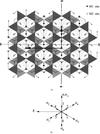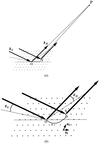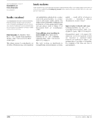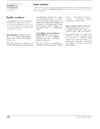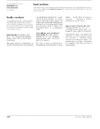issue contents
March 2000 issue

Cover illustration: Unit cell of a self-intersecting minimal surface with symmetry I432. The surface subdivides R3 into two congruent three-periodic mutually interpenetrating labyrinths with symmetry P4232. Lines of self-intersection are marked in red. See Koch [Acta Cryst. (2000), A56, 15-23].
research papers
Phase extension in protein molecules is presented. `Super-resolution' extension and a new figure of merit based on crystallographic symmetry are discussed.
False minima occurred frequently during Shake-and-Bake applications to large P1 data sets. These minima can be recognized and avoided with proper choice of parameter-shift conditions.
A method to obtain the crystal potential from the scattering matrix in dynamical electron diffraction, which takes absorption into account, is proposed.
Simulated annealing can be used to solve the Sayre equation for ab initio structure determination. Trial calculations involving as many as 126 light atoms in the asymmetric unit are presented.
Geometrical criteria to identify the twins and allotwins of the four basic polytypes of mica from their diffraction patterns are derived and expressed by means of the `minimal rhombus' unit in reciprocal space.
The phase (M2Cu2O3)(Cu1+δO2+γ) described as the member m/n = 1/1 in the series (M2Cu2O3)m(CuO2)n can be considered as an individual `Cu-deficient ladder-type' structure intermediate between SrCu2O3 and incommensurate phases (M2Cu2O3)m(CuO2)n (m ≠ n).
A method to expand conventional scalar validation statistics to three dimansions is described.
Reflection and transmission coefficients of X-rays by a single atomic plane are obtained in the general case where the plane consists of any two-dimensional Bravais lattice and the incident and exit X-ray beams take any direction with respect to the plane. A formula obtained for the coefficients is written in simple form.
A cylindrically symmetric model is proposed for the distribution of atomic coordinate errors in helical structures. Formulas for likelihood functions in fiber difraction are presented.
A method for the classification of crystal structures is proposed, which is based on the representation of the interatomic bond system in a crystal as a finite `reduced' graph. The computer program IsoTest realizing this method is described.
An effective quantitative CBED method was used to obtain the Debye–Waller factors of Co and Ti atoms in Co3Ti. The results are BCo = 0.20–0.24 and BTi = 0.41–0.43 Å2 at room temperature.
international union of crystallography
Free 

books received
Free 

Free 

Free 



 journal menu
journal menu













